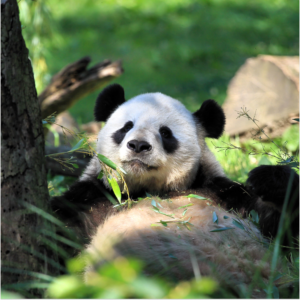Recognised across the world for being cute and cuddly, pandas are lesser known for their involvement in global diplomacy.

June 10, 2010, the National Zoo in Washington, DC. A lease on pandas from Washington was not extended by China.
December 1, 2023
‘Panda diplomacy’: How furry mammals are used in China’s foreign relations
After more than 50 years of renewal, the Smithsonian Institution, which oversees the Washington Zoo, has been unable to keep the lease on three pandas currently residing there.
Next year, the Washington pandas are to go back to China and there will not be a single panda in the United States.
It is unclear what is going to be next for the Washington Zoo. Maybe it will go a short period of time without the furry diplomats, as it has already happened once in 1999 when Washington briefly ended up without pandas.
It is known that the issue of pandas was discussed when US President Joe Biden met his Chinese counterpart, Xi Jinping.
Xi hinted at China being open to sending pandas to the San Diego Zoo in the future, though he did not mention a specific date. Xi, in the meeting, mentioned that he knew people “were reluctant to say goodbye to pandas” in Washington and came to see them off.
Where do pandas live and why?
In nature, pandas are native to central China but they can be found in zoos across 19 countries. The majority were leased by China to help with the conservation of the animals, as since 1990 they had been considered close to extinction.
In 2016, the International Union for Conservation of Nature downgraded the giant panda from ‘endangered’ to ‘vulnerable’. In 2021, China announced that the wild panda population doubled over the last 30 years and Beijing no longer considers them endangered.
China also pushes to take matters of conservation into their own hands by aiming to open the world’s biggest national park system for the protection of pandas.
Effectively, according to Ryan Teague Beckwith and Courtney McBride from Bloomberg, Beijing might not feel the need to send pandas away for conservation in other countries anymore.
In recent years, discussion has taken place for them to return home from certain countries following their status change. But COVID-19 delayed this process.
As the pandemic ended, the furry black and white ‘diplomatic weapons’ are heading back home from the USA and the United Kingdom due to leasing contracts not being extended by China.
It has since questioned what this now means for the future of pandas and the world.
What is panda diplomacy? When did it first start, and how did it evolve?
The practice of ‘panda diplomacy’ dates back as far as the ancient times of the Tang dynasty (618 – 907 BC), but the practice of loaning pandas to other countries has become part of China’s diplomatic quiver since the 1980s.
Before then, pandas were gifted to countries, not ‘rented’, and that is how Mexico is currently the only country to own a panda besides China. Since 1984, all pandas have been loaned to other countries, such as for 10 years, and this period can be extended by China.
The host countries have to pay a bill of 1 million each year per couple and all the bear cubs born in the host countries have to be returned to China.
Why are pandas used in this way?
When China decides to send pandas abroad they usually choose countries with whom their “relations are on the upswing,” said Kurt Tong, one of the managing partners of the Asia Group consultancy.
In recent times the relationship between Washington and China has been strained by disagreements over trade, human rights abuses and Taiwan status. According to Tong there it is ‘not surprising’ that the Chinese government is letting these leasing agreements with the US expire.
Pandas are used by China as a sort of assurance of ‘soft power’, Judith Shapiro, the author of ‘China’s Environmental Challenges’, said in American University. In terms of global relations, China relies on ‘Guanxi’, which is a Chinese concept of denoting trust, loyalty and longevity in a deep trade relationship.
According to an Oxford University study on panda diplomacy from 2013, pandas are used by China through this concept, in a way that promotes a mutual relationship between China and the host countries. Pandas have long been a symbol of wildlife conservation.
As part of this study, Dr Paul Jepson, who led the research team, said at the time that China was reclaiming the ‘soft power’ embodied in the panda as both emblem and living animal.
Adding that “as a result, the political trade, economic and cultural imperatives of China may come to more explicitly shape strategies to protect and restore wild panda populations.”





